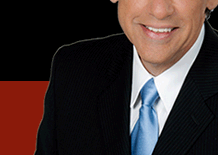
|
| From
the Field |
|
|
 Week
Three of AMERICA FIGHTS BACK, Thoughts.... Week
Three of AMERICA FIGHTS BACK, Thoughts....
As journalists we go out and get the stories -- the facts. The
attacks on New York and Washington, DC have had many of us thinking
and soul-searching.
Learn about the industry from professionals working in it! Read
"From The Field" for the latest happenings in the
field.
Now, radio and television journalists from all over share their
feelings. If you'd like to share your thoughts send them to
Hal@HalEisner.com


Keeping a Stiff upper lip
By Michael Wilk
New Yorkers are a brave lot. It has now been a month since two
hijacked jumbo jets crashed into the World Trade Center, reducing
them to rubble, and killing more than 6,000 people. President
Bush has declared war on terrorism, armed forces are advancing
on Afghanistan, and some 500 individuals who were in one way
or another connected with terrorist activity here in the ĎStates
have been arrested.
The Taliban regime in Afghanistan refuses to surrender Osama
Bin Laden, the mastermind behind anti-American terrorism, to
authorities. And through it all, New Yorkers are still going
to their places of employment, shopping, dining, and going to
shows and movies. The city doesnít seem quite as noisy as it
was prior to the terrorist attacks. People are actually smiling
at each other, and being a little more polite as well. Traffic
has been heavier than usual, due to spot checks on vehicles
going over New Yorkís bridges, and vehicles containing one person
are subject to scrutiny.
However, despite this appearance of "back to normalcy" amongst
New Yorkers, there is a feeling of collective apprehension.
Tuesdayís headline on the Daily News read, "Bioterror and the
city", with 26 pages devoted to the possible threat of biological
warfare, and what New Yorkers can do to protect themselves and
their families. After reading that, Iíve come to the conclusion
that New Yorkers must be brave.
We have been told to "return to normalcy" in our daily routines,
and yet we are subjected to newspaper headlines such as the
abovementioned. I am amazed that widespread panic hasnít spread
throughout the city, after reading articles such as this. I
havenít exactly been a shrinking violet all these years, but
my heart pounds when I read about Anthrax, smallpox, nerve gas,
and the like. I donít feel as secure as I used to.
A co-worker and I were just speaking, months ago, that Americans
have been very fortunate, never having been subjected to bombings,
such as the British in the London Blitz of World War II, or
the Israelis, to which being subjected to terrorist attacks
is practically a way of life.
And yet, I ride the subway to my job, buy groceries, shop, listen
to music, watch television, and play with my dogs. I am attending
a reunion from my high school, the High School of Art and Design,
this evening. I will be seeing old friends, many of whom I havenít
seen in over twenty years.
My dear friends, Harry and Nancy Lemay, have flown in from California
to attend. A brave thing to do, in view of what has recently
occurred. Other alumni have flown in from other parts of the
country to attend as well. A dear friend, who was at the World
Trade Center the day of the attack, is attending as well. She
is a beautiful, brave lady. I can only imagine the terrible
things she must have seen on September 11. Itís not quite the
same thing, watching it on television. And yet, she is keeping
a stiff upper lip. She hasnít lost her keen sense of humor,
nor her kind and generous spirit.
Yes, New Yorkers have "attitude". They are also unique, coming
from a wide and diverse variety of ethnic, cultural, sexual
and economic backgrounds. And they endure.

 A
New York State of mind A
New York State of mind
BY MAT TOMBERS
On Friday, the third Friday after the attack on the Trade Center,
I went down to Washington, D.C. for meetings with a client that
had been postponed since the 12th of September.
Leaving my apartment on Spring Street, I walked west, toward
Sixth Avenue. At the corner of Spring and West Broadway, I did
what I have done every time I have crossed that intersection.
I looked south. Until three weeks ago, the southern look was
dominated by the World Trade Center. It was why I looked south.
They were there; they dominated the horizon. Donít misunderstand.
I thought they were ugly buildings Ė I had thought they were
ugly buildings the first time Iíd seen them in 1978, during
my first trip to New York. But they were huge. There was nothing
else like them and in that largeness and that hugeness; there
was something stable about them.
Friday morning, looking south, I intellectually and rationally
understood they were not there. Emotionally, in my heart, it
was not real. I had seen them burning Ė much more frightening
through my own eyes than through the lens of a television camera.
I had seen the smoke and dust and clouds that followed their
collapse. I had worked my way uptown and downtown through the
police barricades. I lived two blocks north of the evacuation
zone. I was close enough to know this was real. But in my heart,
standing at the intersection of West Broadway and Spring, looking
south, my heart did not believe there was no longer a World
Trade Center.
I have to be disciplined as I go by that street corner or I
could stand there for hours, lost in my own personal exegesis
of recent events, never to come out of it. At Penn Station,
I was mildly surprised that the crowd was still as thin as it
had been.
Pre September 11th, you had to fight for a place in the crowd
waiting to board the north and south bound Metroliners. But
you hadnít had to the Friday before when I had taken a train
north and you didnít have to today, taking a train south. There
was lots of room at Penn Station. People really werenít traveling
that much. The train itself was only half full. It was the 7:30
Excela Express and it was, most times, a popular train. It was
comfortable, new and delivered you into Union Station at 10:09,
in plenty of time for an 11:00 meeting. I live in New York.
I used to live in D.C. The two cities terrorists attacked.
On the train going down I observed that everyone was more silent
than usual, people curled into themselves, luxuriating in the
half emptiness, everyone took two seats and created a little
cocoon for themselves. The ringing of cell phones was less tolerated
than usual and someone who spoke too loudly into his was chastised
by look. He was surprised. After all, this wasnít the quiet
car. But we want quiet, all of us who live in New York. The
streets are still more silent than they were. Laughter is returning
but only slowly, only with a small sense of guilt. It goes quiet
quickly when passing the bus shelters on Sixth, plastered with
the faces of the missing and now presumed dead.
In D.C., walking out of Union Station, I could see the changes
in security that had been made. The taxi stand was in a different
place, further from the building. You couldnít drop off right
in front; there were more police and, here too, fewer people.
In a cab, I went out to Arlington, Virginia, where my client
has their offices. The route took me around the Pentagon, past
the gapping hole in the building, dark and burnt, a gapping
hole in a building, and a gapping hole in an institution. There
is more quiet in D.C., too. Less noise and jostling.
I have meetings with a Brit who had spent four days in Halifax,
Nova Scotia, grounded on his way back to the U.S. I lunch with
him and another ex-pat Brit and they feel differently about
D.C. than they did before. Never great fans; they now dislike
it more. In New York, tragedy has solidified passions for the
city; a sense of civic pride has been made deeper, deeper than
even newcomers like myself could believe they would feel. After
all, weíve only lived here two years. But I was here; we were
here. We lived through the greatest nightmare in sixty years.
We were here when the world changed. It has. We just donít know
to what. Getting home Friday night, we stayed up late, talking.
For four hours, we talked and talked and talked and talked about
the meaning of this, for us. It has made us more at home here.
It has made us aware. It has changed us. My partner is constantly
tired; his way of dealing with events. I sleep but with deep
dark dreams that are confused and full of smoke and in living
color. The reality is that we are aware that we live one and
a half miles from the hole in the heart and we are affected,
with ripples through our lives that we do not yet know. We all
are affected.
On Saturday, on my way to a meeting, I pass people on the streets.
Some are normal. Some stare deeply out into space, lost in some
place I recognize in their eyes but cannot name. It is the place
in the self where assessment of change, change in the heart,
is being made. Who am I now? Now that the world has changed.

The City Observed
By Sam Hall Kaplan
This week, I was considering commenting on imaginative additions
to two of our art and design schools, and a creative new campus
downtown for the Southern California Institute of Architecture.
I also want to talk about a new exhibit exploring what's hot
on the local architecture scene, mounted by MOCA and on display
at the Geffen downtown and the Pacific Design Center. And there
is the drama of downtown development, the trials and tribulations
of the efforts by the school district to build needed new facilities;
the search for design conscious affordable housing, and the
continuing threat to our fragile environment.
This is all grist for my mill, to which I eventually hope to
add sugar and spice, and bake for you edification and enjoyment.
But everytime I sit down these days to write about architecture
and design, an effort that requires me to conjure up images
in my artistic right brain as references for my literary left
brain, my mind drifts to the scenes of the World Trade Center
imploding.
Having in the distant past watched the center rise as a native
New Yorker, written about it as a critic, and worked for a decade
in its shadow, its destruction and the resulting deaths haunt
me. But in a provocative way, the memory of the twin towers
also renews my belief in the importance of buildings, of architecture
and design, to define communities and cities, and to lend them
a sense of place, and lend us a sense of history. Be it New
York or Los Angeles, most everywhere, we tend to take our historic
places and spaces for granted, until, of course, they are gone,
and with them our communal connection to our past, present and
future. That is why landmark preservation should be the cornerstone
of any city planning effort. We need those landmarks, be they
buildings or beaches, rows of houses or rows of trees. They
are the stuff that anchors us to a place, and comforts us.
But what happens when they are destroyed, as was the World Trade
Center? The towers were the focal point of lower Manhattan,
an icon of capitalism, overscaled and overbearing, just like
its host city, but beloved. And now where they stood is a void,
a void that must be addressed if New York as a city, the United
States as a nation, and we as its citizens, are to be healed
and move on, to better and brighter times. Reshaping the space
as a respectfully landscaped park alone will not do it. Indeed,
I fear, it might result in accenting the void, more a reminder
of the enormity of the terrorist act than of the victims who
were buried in the rubble.
There of course should be a tasteful memorial. But I feel it
should be a centerpiece in an urbane plaza bustling with life,
edged by a distinctive cluster of office buildings, replacing
and improving the 10 million square feet of space lost. And
somehow emerging from the roofs of the scaled down structures
I see light, delicate spires rising into the sky, to curve and
weave together, to create a single, soaring luminous tower,
taller and prouder than the original. To be sure, there most
certainly will be thousands of proposals over the next several
years, no doubt touching off a protracted, intense national
debate; a debate that I expect that will be both healing, and
heroic. |
|
|
|
| |
|

















